This article was co-authored by Michael Lewis, MD, MPH, MBA, FACPM, FACN. Michael D. Lewis, MD, MPH, MBA, FACPM, FACN, is an expert on nutritional interventions for brain health, particularly the prevention and rehabilitation of brain injury. In 2012 upon retiring as a Colonel after 31 years in the U.S. Army, he founded the nonprofit Brain Health Education and Research Institute. He is in private practice in Potomac, Maryland, and is the author of "When Brains Collide: What every athlete and parent should know about the prevention and treatment of concussions and head injuries." He is a graduate of the U.S. Military Academy at West Point and Tulane University School of Medicine. He completed post-graduate training at Walter Reed Army Medical Center, Johns Hopkins University, and Walter Reed Army Institute of Research. Dr. Lewis is board certified and a Fellow of the American College of Preventive Medicine and American College of Nutrition.
There are 9 references cited in this article, which can be found at the bottom of the page.
This article has been viewed 55,926 times.
A concussion is a type of mild traumatic brain injury (MTBI). It can be caused by a bump, a hit, a fall, or any type of head injury that pushes the head and brain back and forth rapidly. In a concussion, the brain is shaken back and forth within the skull.[1] Most concussions are mild in the sense that a person most likely will recover completely, but the symptoms can be very difficult to notice, can develop slowly, and can last for days or weeks. If you have been hit in the head, you should see a physician within one to two days at the most to be evaluated, even if you don't think it is serious. After seeing a doctor, there are ways you can treat a mild concussion at home.
Steps
Treating a Mild Concussion Immediately
-
1Call emergency services. If someone has a head injury, you should call 911 and have them checked out by medical professionals.[2] Even minor concussions should be checked out by a doctor.[3] If you choose not to call emergency services after a minor head wound, you still need to watch for severe symptoms. If you notice any of these symptoms, call 911 immediately:
- Vomiting
- Having pupils of unequal size
- Being dizzy, confused, or agitated
- Being unconscious
- Seeming drowsy
- Having neck pain
- Having slurred or difficult speech
- Having trouble walking
- Having seizures
-
2Check the person over. After a head injury, check the person. Look for loss of consciousness first. Then, check their mental awareness. Don't move them unless it's absolutely necessary.
- To check for mental awareness, ask the person their name, what day it is, how many fingers you're holding up, and if they remember what just happened.
- If they are unconscious, check their airways, breathing, and circulation to make sure they're breathing, and immediately call emergency services.
Advertisement -
3Make the person rest. After someone suffers a blow to the head, they need to rest. If the head wound isn't major, the person can sit up. Make sure they are in a comfortable position. Cover them with a blanket if one is available.[4]
- If the head wound is severe, or you believe the person has neck or back damage, don't move them unless necessary.
-
4Apply ice. If the injury is not bleeding, apply ice to any swollen areas. Make sure not to put ice directly on the skin. Instead, place a cloth between the ice and the swollen area.[5]
- You can use a bag of frozen vegetables if you don't have an ice pack or ice available.
-
5Apply pressure. If the wound is bleeding, apply pressure to it to stop the bleeding. Use a towel, article of clothing, or other piece of cloth to staunch the bleeding. If at all possible, make sure the cloth is clean, but if you don't have access clean cloth, use the cleanest piece of cloth you can find. Don't press too hard; you want to stop the bleeding, but not cause any additional pain. Gently press the cloth to the wound.[6]
- If at all possible, keep your hands away from the wound. Only touch the wound with the towel to avoid transferring bacteria into the wound.
- If you believe there is a serious injury, don't move the person's head or remove the debris from the head. Wait for emergency services to arrive.
-
6Be prepared to administer first aid if necessary. If the person loses consciousness while you wait for help, you will need to monitor their breathing and pulse. Watch for obvious signs of breathing (such as the rise and fall of their chest) or see if you can feel their breath on your skin by placing your hand near their nose and mouth. Check their pulse by placing your index and middle fingers against the groove in the neck, just beneath the jaw and to the right or left of the voice box or Adam's apple.
- If the person throws up, carefully turn them on their side, making sure their head and neck do not twist. Clear their mouth of debris so they do not choke on their vomit.
- If at any time the person stops breathing or has no pulse, begin CPR. Continue until emergency personnel arrive.
Treating a Mild Concussion at Home
-
1Rest. Treating a mild concussion requires both physical and mental rest. That is the single most important thing a person can do to recover as quickly as possible.[7]
- Physical rest means refraining from physical activity and exertion. A person should not get involved in any sports or any vigorous activity until their symptoms are gone or their physician clears them.
- Mental rest means not engaging in thinking, reading, using the computer, watching TV, texting, schoolwork, or any activities that require concentration. Do not drive or operate machinery or tools.
-
2Get plenty of sleep. In addition to resting while awake, a person with a concussion needs to get plenty of sleep at night. This is just as important as resting. Try to get at least seven to nine hours each night.
-
3Avoid mind-altering substances. When someone has a concussion, they should avoid mind-altering substances. Do not drink alcohol, and do not take any recreational drugs.[8]
-
4Take pain reliever. If a person has headaches, they can take acetaminophen (Tylenol) for pain.
- Avoid ibuprofen (Advil, Motrin IB), aspirin, and Naproxen (Aleve). These pain relievers can increase internal bleeding.[9]
-
5Use an ice pack. If someone has a bump or a bruise that hurts, use an ice pack. Don't place the ice pack directly on the person's skin. Wrap it in a towel, and hold it on the bump or bruise for 10 to 30 minutes. Repeat every two to four hours for the first 48 hours.
- If an ice pack is not available, a bag of frozen vegetables can be used.
- Ice packs can help with the inner headache as well.
-
6Stay with someone for 48 hours. When someone has a concussion, they should not be alone for 48 hours after the injury. Someone needs to stay with them in case they start exhibiting serious symptoms.[10]
Monitoring Serious Symptoms
-
1Recognize the symptoms of a concussion. After someone hits their head, they or someone close to them needs to monitor for symptoms. They needs to know if they have a concussion. The most common symptoms of a concussion include:[11] [12]
- Headache or a sense of pressure in head
- Nausea or vomiting
- Dizziness or loss of balance
- Double or blurry vision
- Sensitivity to light or noise
- A sense of feeling sluggish, hazy, foggy, or groggy
- Confusion, or concentration or memory problems like amnesia of the event
- General sense of not feeling right
- Seeming dazed, stunned, confused, forgetful, and moving clumsily
- Loss of consciousness
- Slow to answer questions
- Mood, personality, or behavior changes
-
2Monitor for delayed symptoms. Some concussions symptoms can be delayed. Symptoms can occur minutes, hours, or even days after the injury. A person should continue to watch for symptoms for a few days after the concussion.[13] These include:
- Concentration or memory problems
- Irritability and other personality changes
- Sensitivity to light and noise
- Sleep disturbances, such as not being able to go to sleep, difficulty staying asleep, or not being able to wake up
- Psychological adjustment problems and depression
- Disorders of taste and smell
-
3Watch for symptoms in children. In young children, it can be difficult to detect a concussion. In children, symptoms of a concussion include:[14]
- A dazed or confused appearance
- Listlessness
- Easily tired
- Irritability
- Loss of balance and unsteady walking
- Excessive crying with nothing working to soothe the child
- Any change in eating or sleeping patterns
- A sudden lack of interest in favorite toys
-
4Monitor for red flags. Some symptoms that occur after a concussion are red flags. Red flags are signs that someone should get immediate medical attention. These red flags include:[15]
- Repeated vomiting
- Any loss of consciousness that lasts longer than 30 seconds
- A worsening headache
- Sudden changes in behavior, the ability to walk, like sudden stumbling, falling or dropping objects, or thinking ability
- Confusion or disorientation, like not recognizing people or surroundings
- Slurred speech or other changes in speech
- Seizures or uncontrolled tremors
- Vision or eye disturbances, like pupils of unequal sizes or very large, dilated pupils
- Dizziness that doesn't get any better
- Any symptoms that get worse
- Large bumps or bruises on the head (other than the forehead) in children, especially in infants under 12 months of age
Expert Q&A
-
QuestionCan I sleep after I hit my head?
 Michael Lewis, MD, MPH, MBA, FACPM, FACNMichael D. Lewis, MD, MPH, MBA, FACPM, FACN, is an expert on nutritional interventions for brain health, particularly the prevention and rehabilitation of brain injury. In 2012 upon retiring as a Colonel after 31 years in the U.S. Army, he founded the nonprofit Brain Health Education and Research Institute. He is in private practice in Potomac, Maryland, and is the author of "When Brains Collide: What every athlete and parent should know about the prevention and treatment of concussions and head injuries." He is a graduate of the U.S. Military Academy at West Point and Tulane University School of Medicine. He completed post-graduate training at Walter Reed Army Medical Center, Johns Hopkins University, and Walter Reed Army Institute of Research. Dr. Lewis is board certified and a Fellow of the American College of Preventive Medicine and American College of Nutrition.
Michael Lewis, MD, MPH, MBA, FACPM, FACNMichael D. Lewis, MD, MPH, MBA, FACPM, FACN, is an expert on nutritional interventions for brain health, particularly the prevention and rehabilitation of brain injury. In 2012 upon retiring as a Colonel after 31 years in the U.S. Army, he founded the nonprofit Brain Health Education and Research Institute. He is in private practice in Potomac, Maryland, and is the author of "When Brains Collide: What every athlete and parent should know about the prevention and treatment of concussions and head injuries." He is a graduate of the U.S. Military Academy at West Point and Tulane University School of Medicine. He completed post-graduate training at Walter Reed Army Medical Center, Johns Hopkins University, and Walter Reed Army Institute of Research. Dr. Lewis is board certified and a Fellow of the American College of Preventive Medicine and American College of Nutrition.
Board Certified Brain Health Physician
References
- ↑ https://concussionfoundation.org/concussion-resources/what-is-concussion
- ↑ Michael Lewis, MD, MPH, MBA, FACPM, FACN. Board Certified Brain Health Physician. Expert Interview. 19 February 2020.
- ↑ https://my.clevelandclinic.org/health/diseases/15038-concussion
- ↑ https://www.sja.org.uk/get-advice/first-aid-advice/head-injuries/adult-head-injury
- ↑ https://www.nlm.nih.gov/medlineplus/ency/article/000028.htm
- ↑ https://www.nlm.nih.gov/medlineplus/ency/article/000028.htm
- ↑ https://my.clevelandclinic.org/health/diseases/15038-concussion
- ↑ http://www.nhs.uk/Conditions/Concussion/Pages/Treatment.aspx
- ↑ https://my.clevelandclinic.org/health/diseases/15038-concussion
- ↑ http://www.nhs.uk/Conditions/Concussion/Pages/Treatment.aspx
- ↑ http://www.cdc.gov/headsup/basics/concussion_symptoms.html
- ↑ https://concussionfoundation.org/concussion-resources/what-is-concussion
- ↑ http://www.cdc.gov/headsup/basics/concussion_symptoms.html
- ↑ https://kidshealth.org/en/parents/concussions.html
- ↑ https://www.cdc.gov/headsup/basics/concussion_danger_signs.html
About This Article
If someone near you has hit their head and you think they might have a mild concussion, call for emergency medical assistance immediately. While you’re waiting for help, have the person sit up, or ask them to lay down if you think they may have a neck or back injury. If the injury isn’t bleeding, apply an ice pack to the area to help reduce swelling and discomfort. If it is bleeding, apply pressure to the wound until the bleeding stops. For tips from our EMT co-author on how to treat the concussion after the person is seen by a doctor, keep reading!
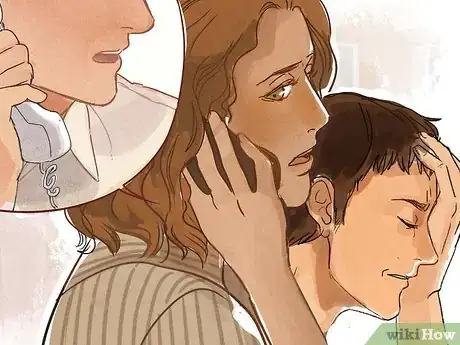


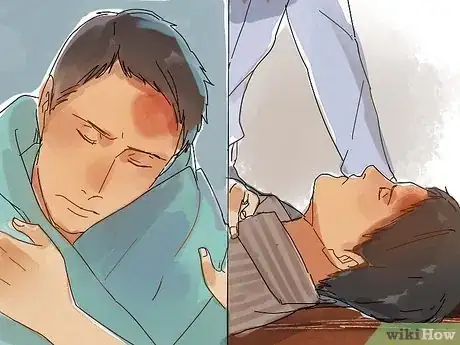

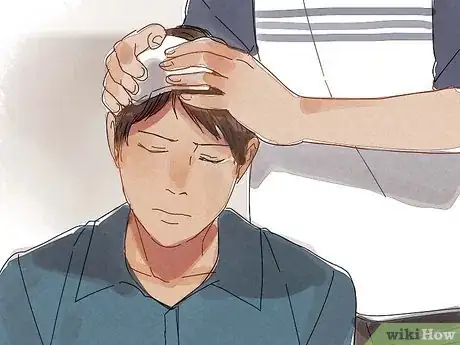
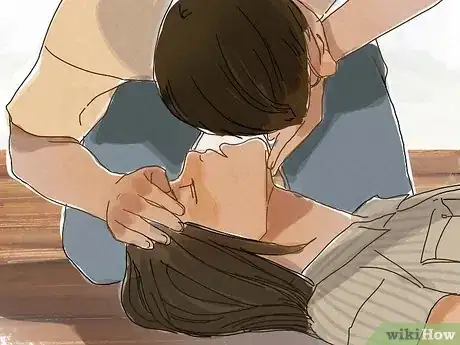


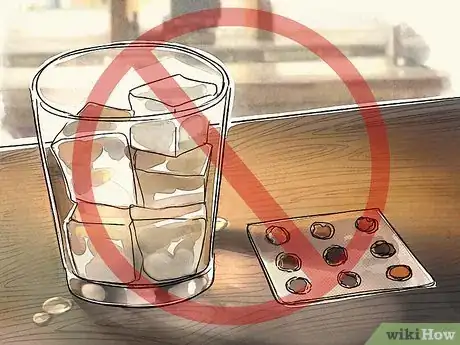

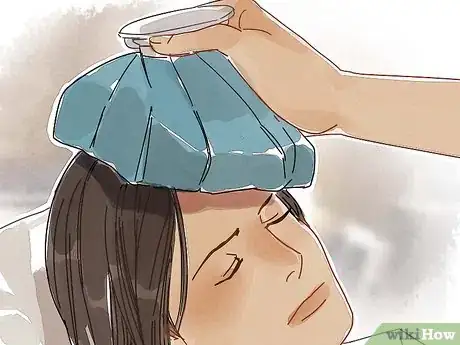
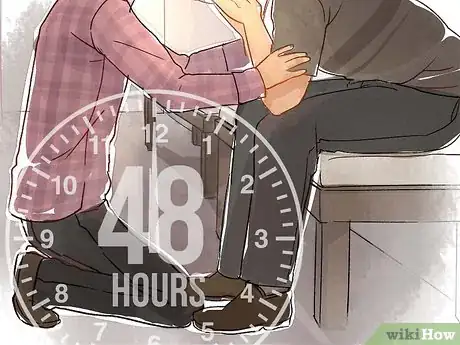
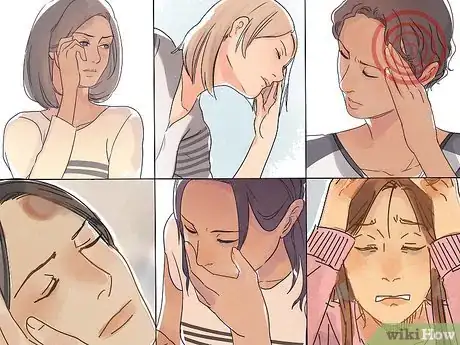
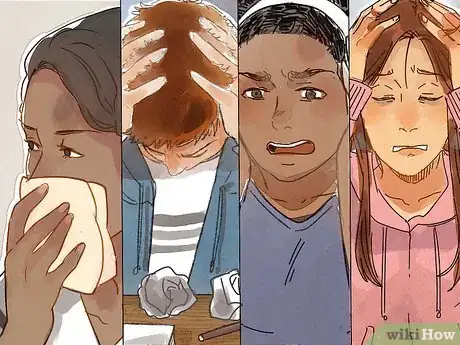
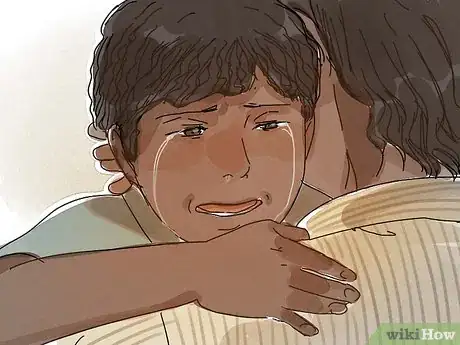
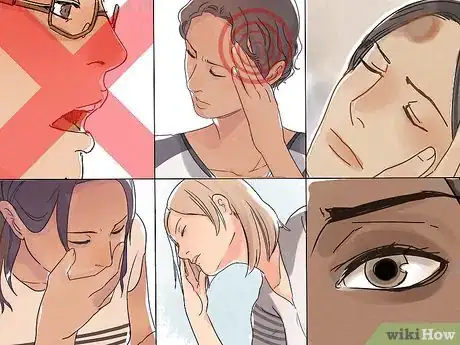

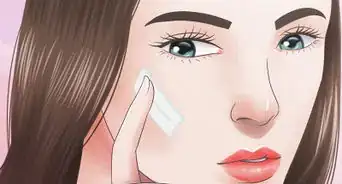
-Step-14.webp)
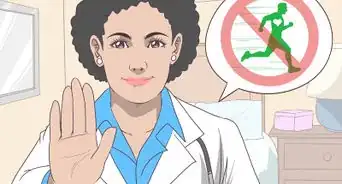
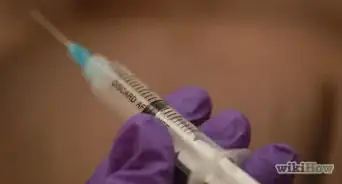







-Step-14.webp)
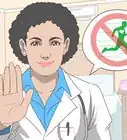
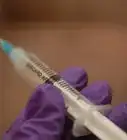



































Medical Disclaimer
The content of this article is not intended to be a substitute for professional medical advice, examination, diagnosis, or treatment. You should always contact your doctor or other qualified healthcare professional before starting, changing, or stopping any kind of health treatment.
Read More...